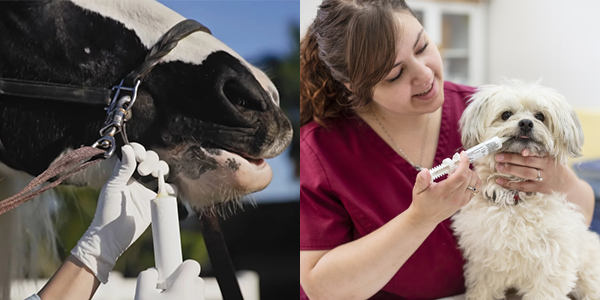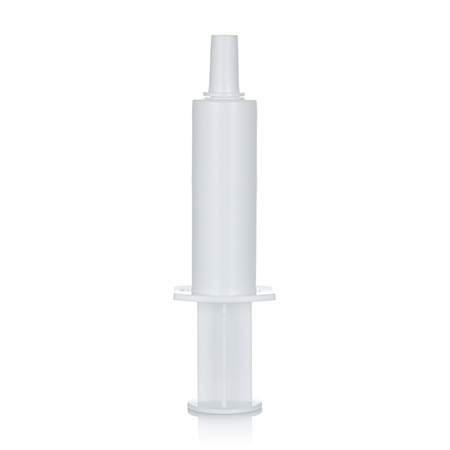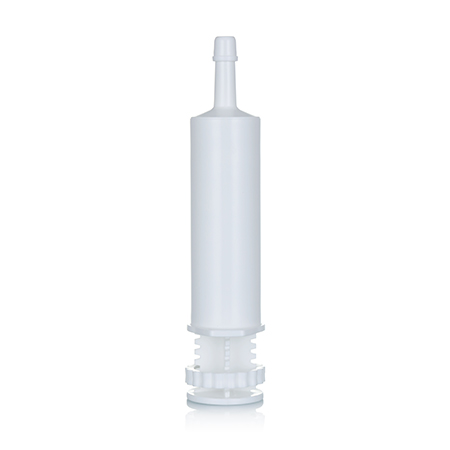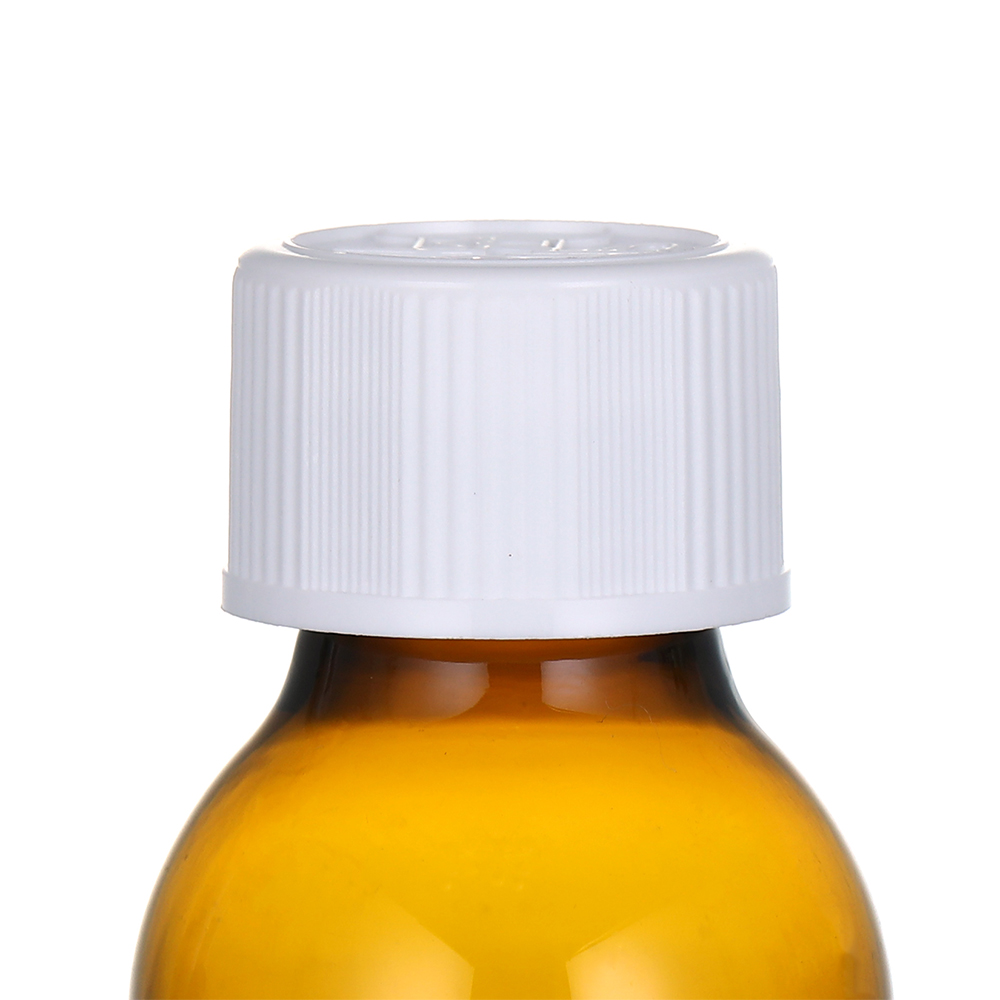Introduction

Importance of This Guide
This guide aims to provide veterinary suppliers, veterinarians, veterinary nurses, and pet owners with specialized product knowledge. It informs them about the proper use and maintenance of these syringes, which aids in improving animal care outcomes. Learning how to use syringes correctly can make the process smoother and reduce stress for both pets and administrators (whether veterinarians or pet owners). With numerous options in the market, knowing what to look for can help you make more informed decisions when purchasing. By enhancing public awareness through this guide about the importance of correct animal medication, responsible pet ownership and animal care practices are promoted.
Primary Uses of Plastic Veterinary Oral Paste Syringes
Medication Administration: The most basic use is for administering oral medications to animals, commonly used for delivering antibiotics, anti-inflammatory drugs, and nutritional supplements.
Deworming Treatments : Frequently used for administering oral deworming medications to animals.
Nutritional Supplementation: Used to inject nutritional pastes or liquids directly into the mouths of animals, especially those that are ill or recovering.
Pain and Discomfort Relief: Can be used to administer painkillers or other medications that alleviate discomfort.
Vaccination: Although most vaccines are administered through injections, there are some oral vaccines where plastic oral syringes come in handy.
Long-Term Treatment Plans: For animals that need to be on a certain medication for an extended period (such as chronic patients), oral syringes offer a convenient and accurate method of administration.
Pet Care: In a domestic setting, pet owners can also use oral syringes to provide daily medications or nutritional supplements to their pets.
The Basics of Plastic Veterinary Oral Paste Syringes
What are the Veterinary Paste Syringes?
Veterinary paste syringes are specialized tools designed for the oral administration of medications, nutritional supplements, and other formulations in a paste form to animals. They are commonly used in both veterinary practices and domestic settings to treat a wide range of conditions—ranging from delivering antibiotics and deworming treatments to providing essential nutrients and vitamins. One of the key advantages of using veterinary paste syringes is the ease and accuracy with which dosages can be administered. They come in various sizes and may be single-use or reusable, depending on the specific requirements. Some are graduated, providing measurement indications for precise dosing. For animals requiring long-term medication, these syringes offer a convenient and reliable method to ensure that they are receiving the proper dosages. By offering a targeted, mess-free way to administer medications, veterinary paste syringes play a crucial role in enhancing the efficacy of treatments and improving animal welfare.
Materials and Manufacturing
Key Materials of Plastic Oral Paste Syringes
Polypropylene (PP): Most commonly used for the barrel and plunger due to its chemical resistance, low cost, and ease of molding.
Polyethylene (PE): Sometimes used for the plunger tip to ensure a smooth gliding motion against the barrel.
Silicone: Used for rubber seals or O-rings to ensure an airtight and smooth movement of the plunger in the barrel.
Manufacturing Process
Injection Molding: Most plastic syringe components, such as the barrel and plunger, are made using injection molding, where molten plastic is injected into a mold and allowed to cool and harden.
Extrusion: For syringes with long, thin nozzles, extrusion methods may be used.
Assembly: After individual parts are made, they are assembled either manually or through automated processes. This usually involves fitting the plunger into the barrel and attaching any rubber seals or O-rings, followed by the nozzle or tip.
Quality Control: Post-assembly, the syringes go through a quality control process to check for any defects or inconsistencies.
Sterilization: Depending on the intended use and requirements, the assembled syringes may undergo a sterilization process, often using ethylene oxide or gamma radiation.
Packaging: Once sterilized, the syringes are packaged in a sterile environment, ready for shipping.
Quality Assurance: Before they reach the end-user, batches are often subject to random sampling and testing to ensure they meet all quality and safety standards.
Structure and Types
Veterinary Oral Dosing Syringes Structure Design
The oral paste syringes consist of four components: barrel, cap, plunger and dosing ring. Look at the picture below

Single-Use vs. Multi-Use
This type of veterinary syring is categorized into single-use and multiple-use applications. For single-use syring, a fixed dose of gel or medication is administered to the animal in one instance. In the case of multiple-use syring, they are equipped with a dosing ring. This allows for the administration of a fixed amount of medication to the animal on multiple occasions.
Volume and Size
Types of Nozzles

How to Choose the Right Syringe
Choosing Based on Animal Type
When selecting a veterinary oral paste syringe, the type of animal you are treating plays a critical role in your choice. Different animals have varying needs, anatomical features, and behavioral traits that will affect how you administer medication. Here’s a guide on choosing the right syringe based on animal type:

Domestic Pets
- Dogs
- Size: Opt for a syringe with a larger barrel for big dogs and a smaller one for puppies or small breeds.
- Nozzle: A straight nozzle often works well for dogs.
- Cats
- Size: Smaller, finer syringes are generally more appropriate for cats.
- Nozzle: A fine, straight nozzle is usually best, as cats can be more sensitive to oral medication administration.
Farm Animals
- Cattle
- Size: Larger barrels are generally required for cattle due to the size of the animal and the dosage required.
- Nozzle: A sturdy, straight nozzle is usually appropriate for cattle.
- Horses
- Size: Opt for syringes with larger barrels due to the larger dosages typically required.
- Nozzle: Long nozzles are often beneficial for reaching further into the horse’s mouth.
- Pigs
- Size: Medium to large barrels are usually suitable.
- Nozzle: A straight nozzle typically works well for pigs.
- Sheep and Goats
- Size: Smaller to medium barrels are often adequate.
- Nozzle: Straight nozzles are generally good choices.
Choosing Based on Medication Needs
When selecting a veterinary oral paste syringe, the primary consideration should be the specific medication needs of the animal in question. Below are some factors to consider:
Type of Medication
- Viscosity: Choose a syringe that can handle the thickness or viscosity of the medication. A syringe with a wider nozzle may be necessary for thicker pastes.
- Chemical Composition: Make sure the syringe material is compatible with the medication to prevent chemical reactions that could alter the medication’s effectiveness.
Dosing Requirements
- Volume: Choose a syringe that matches the volume of the medication to be administered. Syringes usually come in various sizes, from 1 ml to 60 ml or more.
- Precision: For medications requiring very accurate dosing, choose a syringe with graduated markings and possibly a locking mechanism to prevent overdosing.
Frequency of Use
- Single-use vs. Reusable: If the medication is to be administered just once or twice, a single-use syringe may suffice. For long-term treatment plans, consider a reusable, higher-quality syringe.
Animal-Specific Needs
- Species and Size: Different animals may require different syringe designs. For example, a long, slender nozzle may be appropriate for small animals, while a sturdy, straight nozzle may be more suitable for larger animals.
- Temperament: Some animals are more cooperative than others. A syringe with a safety lock might be necessary for more agitated animals to prevent accidental discharge.
Special Considerations
- Pre-filled Syringes: Some medications come in pre-filled syringes for convenience and accuracy.
- Sterilization: Ensure the syringe either comes pre-sterilized or can be easily sterilized if required for the medication.
Other Considerations
- Budget: While it’s essential to choose the most effective syringe for the job, also consider the cost, especially for long-term treatment plans or multiple animals.
- Brand Reputation: Choose a trusted brand known for producing high-quality, reliable veterinary supplies.
- Ease of Cleaning: If you’re opting for a reusable syringe, consider how easy it is to disassemble and clean.
Usage and Precautions
Proper Steps for Use
- Step 1:The administrator washes both hands and puts on sterilized gloves, while also preparing the syringe.
- Step 2:Soothe the animal to maintain a comfortable position, preventing agitation during medication administration.
- Step 3:Prep the dose and remove cap from syringe,then roll plunger ring until the front lines up with prescribed dose
- Step 4:Stand on one side of the animal, holding the halter with the hand closest to it
- Step 5:Make sure animal’s mouth is clear of food.Gently poke the corner of their mouth until it opens.Insert syringe far enough,so they start to chew
- Step 6:Press plunger until ring meets back of syringe.Hold animal’s head up for 5-10s,so medication stays in their mouth
- Step 7:Replace cap and storage the syring safety.
Precautions and Safety
Preventing Cross-Contamination
Cross-contamination can lead to the spread of bacteria, viruses, or even drug-resistant microbes between animals or between different medications. Precautions:
Single Animal Use: Whenever possible, designate a syringe for use on a single animal.
Sterilization: Always sterilize reusable syringes between uses, especially when administering medication to different animals.
Wear Gloves: Using disposable gloves while handling the syringe can also prevent contamination.
Single-Medication Designation: If possible, use separate syringes for different types of medications to avoid mixing.
Dispose of Single-Use Syringes: Never reuse a syringe designated as single-use as it heightens the risk of cross-contamination.
Storage Conditions
Improper storage can lead to degradation of the syringe materials, which may compromise the integrity of the medication or the syringe itself.
Guidelines
Temperature: Store in a cool, dry place away from direct sunlight.
Humidity: Make sure the storage area has low humidity to prevent warping or weakening of plastic components.
Upright Storage: If possible, store syringes in an upright position to prevent any residual medication from blocking the nozzle.
Away from Contaminants: Store away from chemicals, solvents, or other materials that could react with the syringe material or medication.
Expiry Date and Replacement
Recommendations
Regular Checks: Regularly inspect your stock of syringes to ensure none have passed their expiry date.
Visible Damage: Look for cracks, discoloration, or other signs of wear and tear, and replace any compromised syringes immediately.
Manufacturer’s Guidelines: Always adhere to the manufacturer’s guidelines concerning the lifespan of the syringe, even if it appears to be in good condition.
Keep Records: Keep a log for reusable syringes, noting each use to gauge when they may need replacement based on the manufacturer’s suggested number of uses.
By adhering to these precautions and safety measures, you can minimize risks associated with administering medications through veterinary oral paste syringes and contribute to better treatment outcomes and animal welfare.
Frequently Asked Questions(FAQs)
How to Sterilize Veterinary Oral Paste Syringes in Manufacturer?
Ethylene Oxide Sterilization (EO): This is a highly effective low-temperature sterilization method.
Steam Sterilization: This high-temperature sterilization method is typically used for materials that can withstand high heat.
What Animals Can It Be Used For?
Veterinary oral paste syringes are highly practical tools that find extensive use in both household pets and farm animals. Here’s specific information tailored for these two aspects:
For Pets:
- Dogs and Cats: Used for administering deworming medications, antibiotics, and nutritional pastes.
- Small Mammals (such as rabbits, guinea pigs): Used for vitamin supplements and treating
For Farm Animals:
- Cattle and Sheep: Commonly used for treating digestive issues, nutrient supplementation, or administering antibiotics.
- Pigs: Used for supplementing piglets with nutrients and treating digestive issues.
- Horses: Used for deworming, anti-inflammatory treatments, and nutrient supplementation.
- Poultry (like chickens, ducks, turkeys): Used for treating parasitic infections or malnutrition.
How to Solve Syringe Blockage?
Veterinary oral paste syringe blockage is a relatively common issue, especially when using pastes that contain large particles or are viscous. The key to resolving this problem lies in accurately diagnosing the cause of the blockage and taking appropriate measures.
- Inspect the Syringe: First, carefully inspect the syringe to determine the location of the blockage. If possible, try to dislodge the blockage by gently pressing on the syringe.
- Use Tools: For more stubborn blockages, you may use a thin, elongated tool like a needle or wire to gently penetrate or remove the obstructing material.
- Examine the Medication: If blockages occur frequently, it may be necessary to examine the texture and particle size of the medication. Substances that are too viscous or have large particles are more likely to cause blockages.
- Preventative Measures: Before use, test the fluidity of the medication by shaking or squeezing out a small amount to prevent blockage. Regular cleaning and maintenance of the syringe are also crucial.
Please be cautious when addressing blockage issues to avoid damaging the syringe or altering the medication’s properties. If possible, it’s advisable to rinse the syringe with a small amount of cleaner or water after clearing the blockage before continuing to use it.
Can Veterinary Oral Paste Syringes be Customized?
The customization of veterinary oral paste syringes depends on various factors like the manufacturer’s capabilities, order volume, and specific needs of the veterinary practice or end-user. Here are some common aspects that can typically be customized:
Size and Volume: Syringes can be made in different sizes to hold varying volumes of medication, from small doses for tiny animals to larger doses for big animals.
Material: Depending on what the syringe will be used for, you might have the option to select different materials, like plastic types that are more resistant to certain chemicals.
Markings: Graduated markings can be customized to show different units of measurement, or to be more or less detailed, based on the specific dosing requirements.
Color: LaiyangPackaging offer syringes in different colors, which can be useful for quickly identifying different medications.
Nozzle Types: The type of nozzle can often be customized, such as having a longer or more tapered tip for easier administration to specific animals.
Additional Features: Things like safety locks, ergonomic designs, or specialized plungers can also be customized for easier use and additional safety measures.
What are the Steps to Customize Syringes
- Consult with Manufacturer: Discuss your specific needs with the manufacturer, including any custom features and the estimated volume of your order.
- Design Approval: Usually, a prototype or design mock-up will be created for your approval.
- Quality Checks: Ensure that the customized product undergoes rigorous quality checks to meet both the manufacturer’s standards and any relevant regulations.
- Pilot Run: It might be possible to do a small pilot run of the custom syringes to test their efficacy before placing a larger order.
- Final Order: Once all specifications are met and approved, the final order can be placed.
Are Veterinary Oral Paste Syringes Safe to Use?
The safety of veterinary oral paste syringes is a critical concern for both veterinarians and pet owners. Generally speaking, when manufactured by reputable companies and used according to proper guidelines, these syringes are considered to be safe for administering medication to animals.
How to Fill Veterinary Oral Paste Syringes by Pharmaceutical Manufacturer?
Veterinary Oral Paste Syringes can be filled using either front-filling or back-filling methods. In front-filling, medication is loaded into the syringe barrel from the top nozzle, eliminating the need to remove the plunger. In back-filling, medication is loaded from the rear of the syringe barrel, and the plunger needs to be re-inserted after filling. Our produced Veterinary Oral Paste Syringes can accommodate both methods. Depending on the filling approach, we package the syringes differently to facilitate their transport to the filling line. Furthermore, our syringes perform exceptionally well on high-speed filling lines.
User Reviews
As a veterinarian, I find the use of veterinary oral paste syringes incredibly convenient and beneficial for precise medication delivery. They eliminate the guesswork often associated with liquid medications, offering an easy and accurate dosing method. The graduated markings on the syringe are a lifesaver, especially when administering medication to animals of different sizes and needs. The design is usually user-friendly, making it less stressful for both the pets and their owners. I’d highly recommend these syringes for any practice that values accuracy and efficiency.
In my years of practice, I’ve observed that the safety features of veterinary oral paste syringes have drastically improved. The locking mechanisms help prevent accidental overdose, and the quality of materials used often ensures that there is no contamination or reaction with the medication. However, it’s essential to choose syringes from reputable manufacturers to ensure they meet regulatory standards. Also, single-use options are excellent for preventing cross-contamination among patients. Overall, they’re an indispensable tool in modern veterinary medicine.
I recently had to administer deworming medication to my 6-month-old kitten, Whiskers, and I must say, the veterinary oral paste syringes made it so easy! The ergonomic design and markings on the syringe were incredibly helpful for ensuring accurate dosing. I also appreciated that the syringe came with a safety lock feature, ensuring that there were no accidental spills. Highly recommended for any pet parent out there!
Conclusion
Veterinary oral paste syringes have become an indispensable tool in animal healthcare, significantly simplifying the administration of medication to pets and livestock. These syringes offer precision, ease of use, and safety, making them a go-to choice for veterinarians and pet owners alike.
One company that stands out in this sector is LaiyangPackaging, a professional pharmaceutical packaging company that is committed to producing high-quality, reliable, and safe veterinary oral paste syringes. They make their syringes from premium, medical-grade materials, ensuring not just the well-being of the animals but also the peace of mind for the caregivers.
With innovative features like ergonomic designs, safety locks, and precise calibration for accurate dosing, LaiyangPackaging sets a high industry standard. Their products go through rigorous quality checks and comply with international veterinary medicine guidelines, demonstrating their commitment to excellence.











